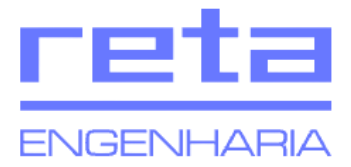Background
Reta Engenharia, now part of AFRY, was engaged to support the planning and optimization of one of Brazil’s largest nickel and cobalt mining complexes. The project included the development of an open-pit mine, supporting facilities, and extensive infrastructure such as internal and external access roads, a high-voltage transmission line, and raw water intake and distribution systems.
The project’s scale was immense, encompassing approximately 13 million cubic meters of earthworks, 110,000 cubic meters of reinforced concrete, and 23,000 tons of electromechanical erection activities.
Note: The video above was produced and is owned by Reta Engenharia. ALICE Technologies does not own or hold rights to this content.
The Challenge
During the Front-End Loading (FEL) stages, the project team aimed to optimize the overall master plan while maintaining critical milestones and adhering to strict labor constraints.
The Reta Engenharia team needed to evaluate multiple planning strategies that would balance workforce capacity, reduce idle time, and improve constructability without compromising the delivery schedule.
The available accommodation facilities limited the maximum number of direct labor resources, which placed additional pressure on optimizing resource utilization and sequencing.
However, traditional scheduling tools can’t efficiently test multiple construction scenarios at scale or account for complex interdependencies. The team needed a solution that could provide data-driven insights and allow for rapid comparison of execution alternatives.
The Solution
To address these challenges, Reta Engenharia partnered with ALICE Technologies to apply AI-powered generative construction scheduling. The collaboration began with Reta Engenharia’s planning and innovation teams gaining a clear understanding of how ALICE works and the principles of generative scheduling.
ALICE’s ability to model project logic, simulate alternative execution strategies, and automatically adjust resource and sequencing parameters allowed the team to test several viable approaches.
Using ALICE, Reta Engenharia simulated different construction scenarios across key areas of the project to identify the most efficient solutions. Three primary cases were analyzed during the study phase:
- Scenario A – MOD Limit: 1,000 workers
In this scenario, simultaneous labor allocation was capped at 1,000 workers. The strategy focused on optimizing construction packages to reduce crane idle time and shorten the overall project duration.
- Scenario B – MOD Limit: 1,200 workers
The labor cap was increased to 1,200 simultaneous workers. The same package optimization strategies were applied, aiming to reduce crane idle time and shorten execution time.
- Scenario C – No MOD Limit
No restrictions were imposed on the number of workers allocated simultaneously. The schedule optimization aimed primarily to reduce total project duration and streamline the number of teams involved.
After validating the findings from these localized studies, the team expanded the analysis to the full scope of the project. The master plan optimization aimed to level labor utilization across the entire project while maintaining the same final delivery date.
A critical constraint was to limit direct labor to 3,200 workers in alignment with site accommodation capacity.
ALICE generated multiple optimized alternatives that allowed Reta Engenharia’s engineering and project management teams to evaluate, compare, and select the most balanced execution strategy based on productivity, resource availability, and schedule feasibility.
The Results
By implementing ALICE’s generative construction scheduling, Reta Engenharia achieved measurable improvements in both project-level performance and operational efficiency.
Project outcomes included:
- 10% less labor idle time
- 33% less equipment idle time
- 24% lower peak resource utilization
- No impact on commissioning or production milestones
These results were achieved through optimized resource allocation, sequencing activities during periods of peak productivity, and improving the integration between work packages and supporting facilities.
In addition to project-level gains, Reta Engenharia realized significant operational efficiency improvements.
The team analyzed and generated scenarios 50% faster and reduced time spent on resource leveling by 44%.
These improvements allowed planners to explore more alternatives in less time, accelerating decision-making during the FEL phase.
Fernando Ferri, Project Manager at Reta Engenharia said, “At Reta Engenharia, innovation is more than a value. It is part of our DNA. High-complexity projects require not only experience but new ways of thinking and acting. Partnering with ALICE allowed us to combine both, bringing agility and intelligence to how we plan and execute large-scale projects.”

.png?width=100&height=100&name=Reta%20-%20T%C3%BAlio%20Duarte%20%20(1).png) Director of New Business
Director of New Business


